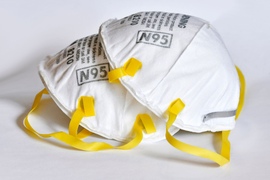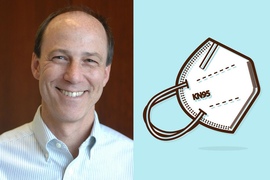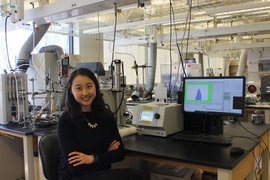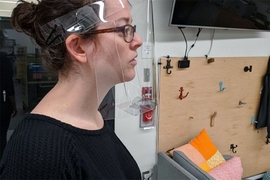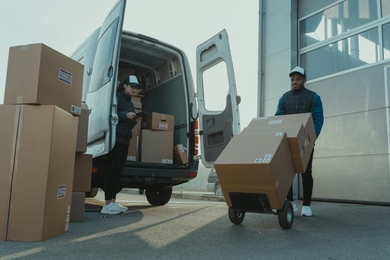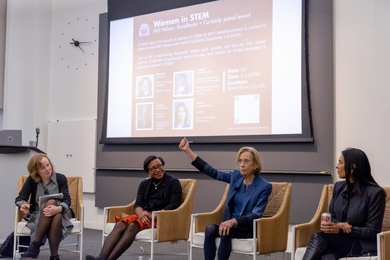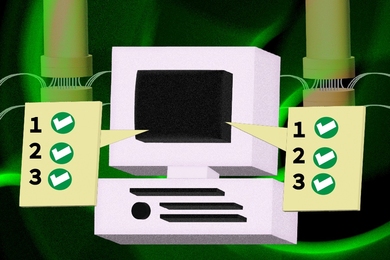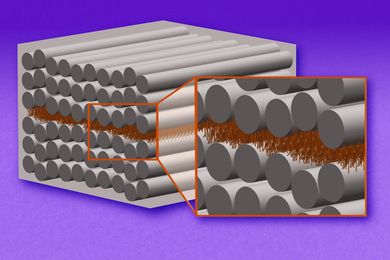In late March, local leaders from academia, health care, and the private sector joined a conference call to hear state officials paint a grim picture: Hospitals in Massachusetts would need millions more units of personal protective equipment (PPE) to keep health care workers safe during the Covid-19 pandemic.
Local manufacturers with experience making things like active apparel and footwear were eager to help, but to do so they’d need to figure out what to make, how to make it, and where to send their products. Each of those decisions, in turn, opened up a variety of other challenges, like sourcing new materials, navigating a maze of quickly changing regulations, and finding the right buyers. In short, a steep learning curve stood between the hospitals that needed equipment and the companies able to help.
It was against this backdrop that state officials launched the Massachusetts Emergency Response Team (M-ERT) under the Massachusetts Technology Collaborative. The group’s organizers, aiming to make an impact in time for the projected peak of Covid-19 patients, quickly established a cross-industry collaboration with the mission of helping local manufacturers pivot operations to produce the most-needed equipment at the highest possible volumes.
Since then, the group has helped more than 50 manufacturers produce millions of items, including FDA-compliant face shields, surgical masks and respirators, ventilator components, isolation gowns, bottles of hand sanitizer, test swabs, and other products. Among other successes, the effort has helped fill local hospitals’ need for face shields, put a local company on track to become the largest producer of medically certified isolation gowns in the country, and helped more than 1,000 people either return to work or fill positions that didn't previously exist.
Across M-ERT’s operations, MIT students, faculty, staff, and alumni can be found lending their support to the efforts. In some cases, community members are working full time leading teams within M-ERT’s subgroups. In others, they are providing expertise and facilities to ease bottlenecks as M-ERT constructs entirely new supply chains.
It takes an army
M-ERT relies on an array of local experts and health care leaders to help manufacturers decide what kind of PPE to produce. It also helps manufacturers source materials, test products, gain regulatory compliance, and train their workforces. In addition to that guidance, funding has been made available to help manufacturers acquire new equipment, expand their workforce, and develop testing facilities.
When M-ERT was first founded, MIT Professor John Hart had been in contact with several initiatives exploring ways to help manufacturers create PPE. Haden Quinlan, who works with Hart in the Center for Additive and Digital Advanced Production Technologies, was able to step in and take a leading role in the new initiative. He was joined by Ben Linville-Engler, certificate and industry director in MIT’s System Design and Management (SDM) program who has experience navigating health care’s regulatory landscape to bring medical products to market.
Since then, the two researchers have spent upward of 50 hours a week leading two of M-ERT’s subgroups. For Quinlan, that has entailed working directly with pivoting companies to build supply chains and translate regulatory guidance into new approaches for product development and labeling. Linville-Engler, in turn, has worked with FDA officials to interpret their guidance and connect various stakeholders across the growing response network. In most cases, though, M-ERT’s operations have been a team effort.
“I think MIT is a unique place in terms of the community response and the willingness to help people like ourselves that are motivated and able run with this stuff and make an impact,” Quinlan says.
Indeed, at each stage of M-ERT’s development, people with MIT affiliations have helped it along. In one of M-ERT’s first projects, the Advanced Functional Fabrics of America (AFFOA) consortium created a centralized hub to help manufacturers test new products. The project was spearheaded by AFFOA CTO Jason Cox PhD ’12, senior product engineer Michael Rein PhD ’17, and CEO Sasha Stolyarov, who has worked at MIT for more than a decade, including roles at Lincoln Laboratory and as a postdoc and graduate research assistant. The hub would be one of AFFOA’s many contributions: Quinlan also credits the organization with helping to craft M-ERT’s overall strategy and with helping manufacturers source new materials from around the country.
As the testing hub was being established, Quinlan and Linville-Engler tapped their contacts at MIT and in industry to get the word out. One of the people they sent an email to, at 9 p.m. on a Saturday, was Steven Palmer with MIT's Industrial Liaison Program (ILP). Within minutes, Palmer replied that he would help spread the word. As a result of support from ILP and many other groups, the online hub had more than 160 entries from manufacturers in the first week. Today it has more than 650 entries from organizations around the country.
When it came time to stand up testing capabilities, MIT Professor Greg Rutledge was among the first to volunteer his lab, and Associate Professor Lydia Bourouiba lent M-ERT testing equipment from her laboratory, which is researching the fluid dynamics of Covid-19 transmission. In addition, Principal Research Scientist Elisabeth Reynolds, who is executive director of the MIT Industrial Performance Center as well as MIT’s Task Force on the Work of the Future, has expanded the task force’s scope to consider the road ahead for recovering firms and the Massachusetts manufacturing ecosystem more broadly while offering advisory insight as M-ERT progresses. She is a member of the state's Advanced Manufacturing Collaborative (AMC), of which M-ERT will be a subcommittee going forward.
Other MIT community members have also found ways to help. Among many other projects, Linville-Engler has begun mapping Covid-19 response efforts across the Greater Boston ecosystem; a map showing MIT’s efforts is available on the MIT Innovation Initiative’s website. And researchers at Lincoln Laboratory have been instrumental in the testing of items like N95 respirator masks and novel filtration materials.
Alumni have also been deeply involved. For example, Deborah Savage PhD ’92 serves as a product manager with M-ERT, while Ric Fulop MBA ’06, currently the CEO of 3D printing startup Desktop Metal, has worked in an advisory role and was critical to M-ERT’s effort to help companies 3D print nasal test swabs to help ease a nationwide shortage.
“Pretty much unequivocally, out of every company we’ve talked to, no one has said, ‘How can I make money in this process?’” Quinlan says. “They’ve all just said ‘How can I help?’”
Indeed, there are too many people involved to mention everyone. M-ERT’s conference calls regularly include more than 50 people — sometimes including, by necessity, Linville-Engler’s infant son. Of course, many people outside of MIT have played integral parts in M-ERT’s success. Other key groups involved include the University of Massachusetts at Lowell, Worcester Polytechnic Institute, the Massachusetts Life Sciences Center, the Massachusetts Manufacturing Extension Partnership, and the Associated Industries of Massachusetts.
Collaboration for impact
M-ERT’s success stories are also too numerous to detail in entirety. In Boston, the MIT alumnus-founded greeting card company Lovepop has worked with M-ERT to begin producing face shields and isolation gowns. MIT spinout Formlabs is 3D-printing nasal swabs in addition to a number of other important medical supplies.
An hour’s drive down I-93, in Fall River, apparel company 99Degrees has used support from M-ERT to produce hundreds of thousands of medical gowns. Merrow Manufacturing, meanwhile, has had to hire 41 new employees to meet the demand for its new medical gowns.
In Brighton and Lawrence, New Balance is producing general-use face masks out of existing sneaker materials. A company official said the switch typically would have taken months, but with help from MIT and Mass General Hospital, they did it in one week. M-ERT’s parent organization, the Massachusetts Technology Collaborative, has devoted a webpage to all of the successful transitions, including the efforts of a team led by MIT Professor Martin Culpepper to create a low-cost, high-throughput face-shield design.
Overall, organizations M-ERT has worked with are producing nearly 1 million nasal swabs, 100,000 face shields, 100,000 face masks and respirators, and 500,000 disposable isolation gowns per week, with future projections in the millions of units.
Now, among other changes in response to the decline in local Covid-19 hospitalizations, M-ERT is moving to standardize its operations to take a less direct approach to supporting manufacturers. But many new partnerships and lines of communication remain active. It’s one of what Linville-Engler hopes are many of M-ERT’s legacies.
“One of the things I hope we take away from this is the importance of continued activation as a community,” Linville-Engler says. “Because the response right now is to flatten the curve, but we still have a huge recovery after this — whether its families grieving or economic redevelopment, we’re going to need the same level of collaboration and community engagement to tackle those problems.”


